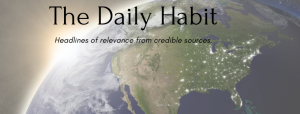LatinaLista — While the rise in the Latino population is shifting the demographics of the country, a new U.S. Census report reveals it’s Multiracial Americans who are impacting the growth of all communities of color.
When the Pew Hispanic Center unveiled their recent report documenting how 52 percent of all U.S.-born Latino children were the offspring of at least one immigrant parent, the reaction from some conservative corners was predictable.
It wasn’t long before the airwaves, cyberspace and Twitter feeds were filled with comments that hinged on the tired conspiracy theory of the country being on the verge of takeover by Latinos.
Of course, it doesn’t help to dispel this myth either when the U.S. Census keeps a running tab each year on how many counties in the nation join the ranks of majority-Hispanic — the current number is 48.
The paranoia that this kind of Latino-focused data unleashes would be funny if it didn’t serve as the basis for state and national legislative bills that attempt to turn the clock back on the advances made with civil rights and affirmative action policies.
From the persistent insistence by state legislators around the country to make English the official language to passing laws demanding photo ID before voting, our nation’s politics illustrate the degree to which people are paying attention and are fearful of the country’s shift in demographics.
Unfortunately, these same people aren’t looking at the complete set of data. If they were, they would realize that their fears are unfounded and they’re buying into a disingenuous campaign intent on creating a negative, and fearful, impression of not just the Hispanic immigrant but all Hispanics.
Part II of the data that should relieve nerves is the latest analysis by the U.S. Census on “Multiracial Americans.”
By definition, a multiracial American is one who identifies him/herself as of “two or more races.” The report, based on 2008 data, found that multiracial Americans are the fastest growing demographic group whose numbers are impacting the growth of minorities.
According to the U.S. Census, the number of multiracial people rose 3.4 percent last year to roughly 5.2 million — that’s 5 percent of the minority population. An AP report on the analysis said that many more multiracials are believed to be uncounted.
The reasons given for the rise in multiracial Americans are being attributed to two factors — a greater social acceptance of interracial marriages and “slowing immigration.” It seems that the states recording the highest number of multiracial Americans, are also states with the highest numbers of Latino immigrants: California, Texas, Florida and New York. The reason for their high numbers of multiracials, according to the AP story, is because immigrants in second and later-generations tend to “marry out.”
But “marrying out” is just one part of the equation. There comes a slew of other consequences, as a result of interracial marriages, that work in tandem to create the multiracial American who: has less and less proficiency of the family’s original language, is a product of a deeper acculturation into American society to the point that only family favorite traditions are still practiced by later generations, feels a diminished connection to the family’s ancestral country of origin and, finally, makes a conscious choice to self-identify simply as American.
I base these assumptions on the experiences of my own family. At the turn of the 20th Century, my grandmother’s family traveled from Durango, Mexico to settle in the state of Oklahoma. Her family was one of the few Mexican families to settle there.
My grandmother married my grandfather who was from Spain. They had eight children. With the exception of two, the rest intermarried with Anglos and Native Americans. Our extended family did and continues to do so as well.
Oddly enough, the Census report validates my family’s actions. The analysis broke out those states by percentage with the highest number of multiracials — Oklahoma tied with Alaska in coming in second after Hawaii.
It is said that 1 in 13 marriages are mixed race. The most prevalent is white-Hispanic, white-American Indian and white-Asian. It’s natural that any offspring would embody the rich cultures of both parents. However, it’s more than that — multiracials symbolize a redefinition of America’s melting pot.



Comment(1)
cookie
It isn’t that it is “fear” of the changing demographics it is the “objection” to it. This is a majority white country and always has been since its founding (since 1776). Along with that there is an identifying culture and language even though there are minority one’s among us. This demographic change is happening mostly from illegal immigration. Do you know of any other country in the world that would accept that laying down?
Hispanics are the majority in 22 countries on the Western Hemishphere. Why do they feel the need to make this country the 23rd one? We that defend our identifying culture in this country get called racists for doing so. I think the shoe belongs on the other foot!
Comments are closed.